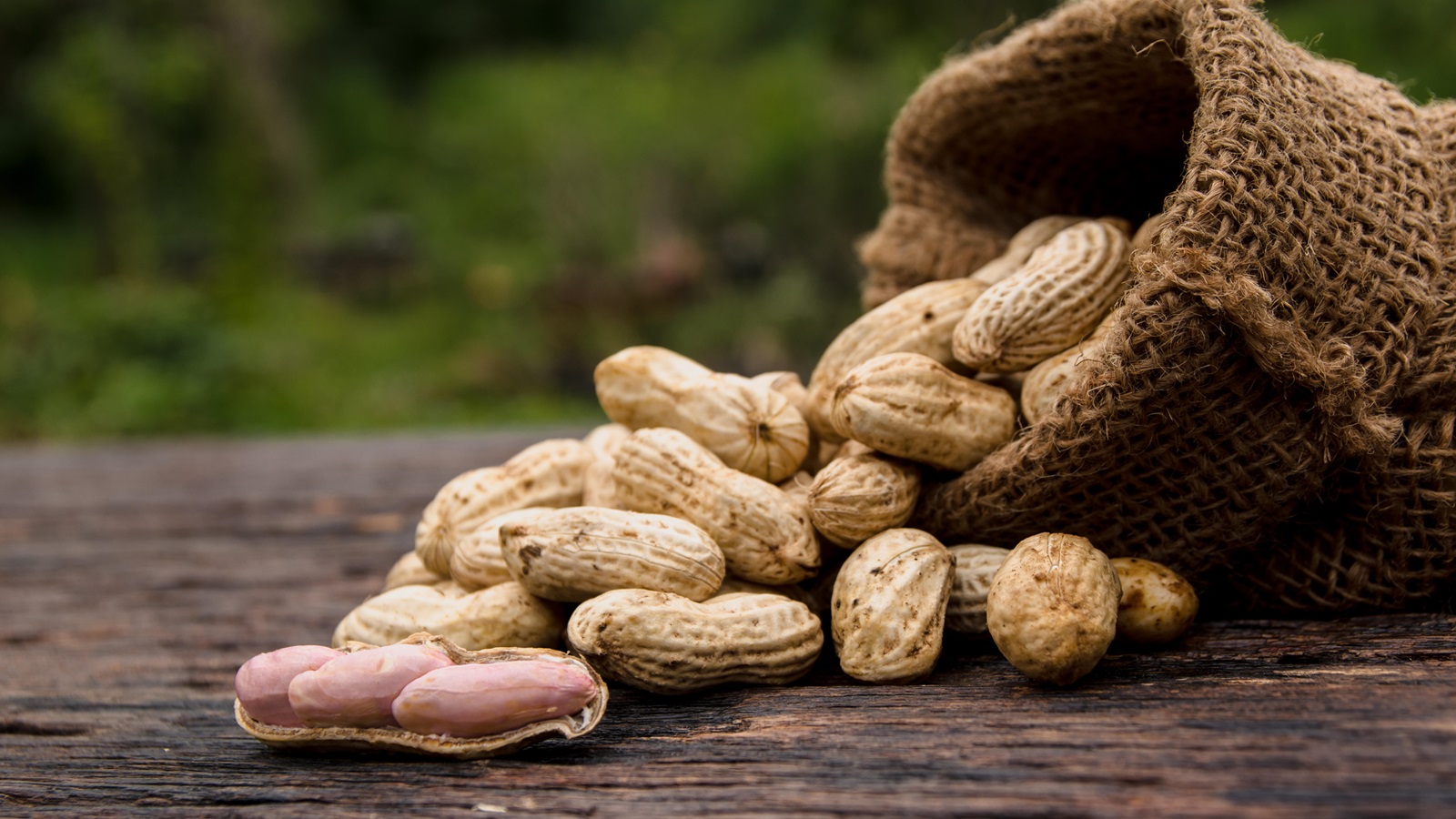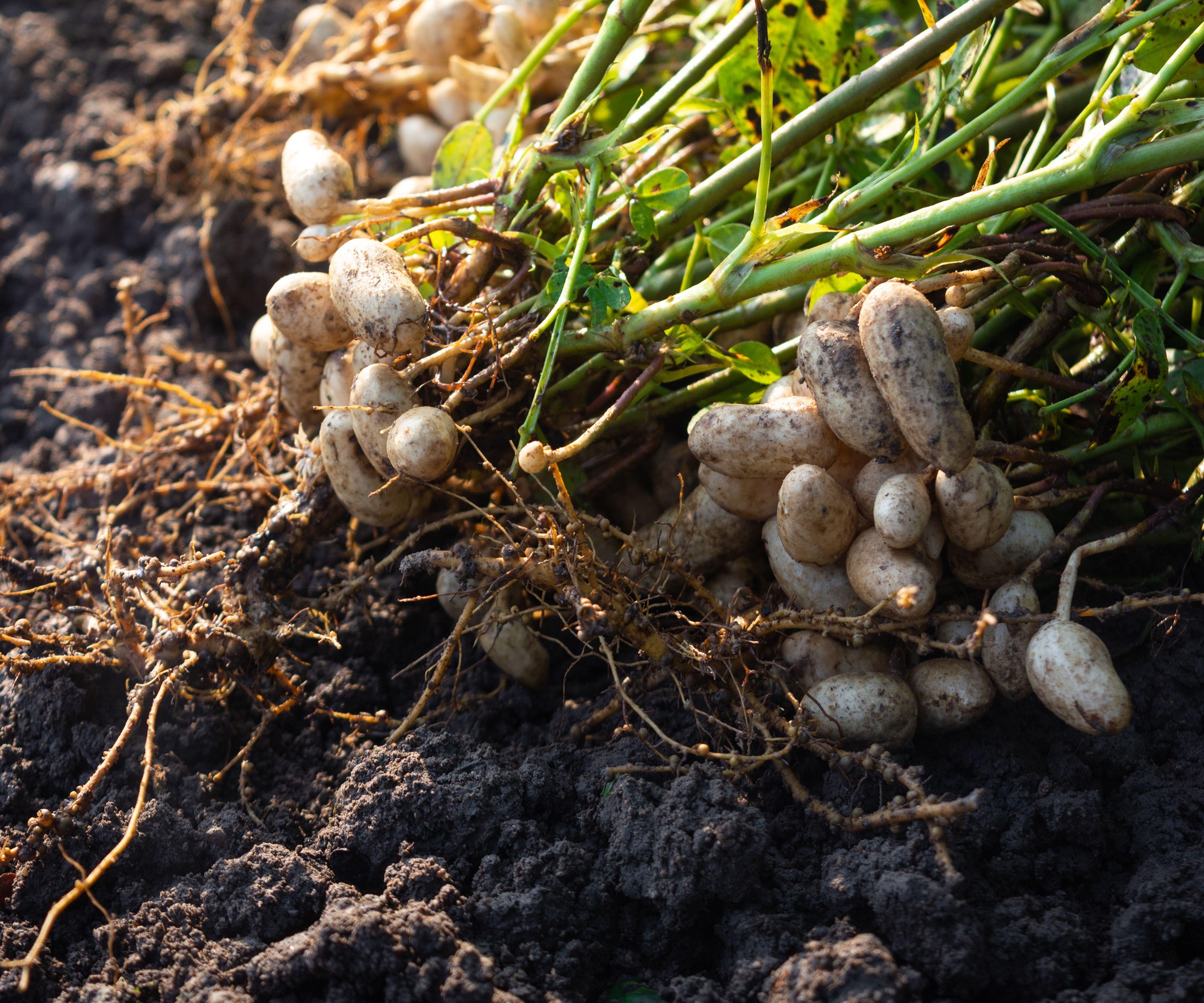
Growing peanuts at home is fun, hugely satisfying and often easier than you may think. Known by many other names such as goobers, goober peas, earth nuts, ground nuts, pindas and pinders - Arachis hypogaea is a sun loving annual that can be grown in the ground or a container.
Often mistaken for a nut, these protein-packed super foods are, in fact, legumes and closely related to beans and peas. Unusually, the heavily veined shells grow below ground, so the lifting of each plant comes with the excitement of not knowing just how big the crop will be.
Today peanuts are widely grown as a commercial crop in the warm southern states of Georgia, Alabama and Florida. They are steadily proving a popular vegetable garden idea amongst home gardeners too, thanks to the rise in more unusual heirloom and cold-weather varieties becoming available.
How to grow peanuts
Healthy and sustainable, peanuts are hugely satisfying to grow at home and fun to harvest too. These underground legumes are happiest in warm and sunny climes but new varieties, together with some nifty gardening tricks mean they can also crop in cooler, northern regions.
First grown in the USA as a commercial crop during the early 18th century, peanuts have long been an American staple. Used mainly for their oil, as an animal feed and occasionally a health boosting food for the poor, they didn’t enjoy much popularity until promoted as a snack food by PT Barnum’s Circus at the end of the century.
Growing habits of peanuts and how to sow them

Best grown in USDA zones 5 - 12, peanuts need steady sun, warmth and well-draining soil for best results. Handy not just for the delicious crop they produce, usually at least 30 shells per plant, these annuals are also nitrogen fixing plants, meaning that they provide extra growth nutrients for surrounding plants by producing their own nitrogen and releasing it into the soil.
Successful backyard crops start with smart seed selection and there are several types of peanut to choose from, each with their own distinct flavor, characteristics and growing preferences.
‘Peanuts are among the funnest crops for kids to grow and the seeds can come in several beautiful colors; there are red, black, purple, magenta, brown, tan, white and striped peanuts available,’ says seed specialist and advisor Martin Walsh. ‘There are diminutive varieties with a pod that yields a single, small, pea-sized seed and there are jumbo varieties which produce pods that have multiple, large seeds the size of a nickel.’
Runner peanuts are high yield making them perfect for commercial growers and producers of peanut butter while brown or red skinned Spanish peanuts naturally have a higher oil content. Virginia peanuts produce large shells and as many as 50-60 per plant but the plants do take longer to mature – around 150 days. Try Jumbo Bailey Virginia peanut seeds from Walmart for a reliable choice.
Valencia peanuts have a distinctive sweet flavor and are possibly the most popular choice amongst small scale growers and homesteaders thanks to their short growth period of three to four months and the high yield of three or four kernels per shell. Of these, variety Tennessee Red has the bonus of tolerating heavier, clay soils. Available as CZ Grain Tennessee red peanuts seeds from Walmart.
Although it is possible to raise crops from store bought peanuts germination is likely to be patchy, so for the healthiest plants opt for buying garden center seeds instead. Not only will this provide you with a wider selection of peanut varieties it can save you valuable growing time and disappointment.
To sow peanuts, carefully crack the papery shell and remove the peanuts within. It’s crucial for germination that they remain whole rather than split in half. ‘Home gardeners may want to plant their peanuts 18 to 24 inches apart to give each plant plenty of space to grow,’ says Martin. Plant at a depth of 2 inches (5cm) and expect to see shoots appear in seven to ten days.
Plants will grow to a height of between 6” (15cm) and 30” (76cm), depending on variety and after 30 days they will produce decorative yellow flowers, that are also edible.
Peanut plants have an unusual way of growing and forming their shells, and it’s well worth knowing how this happens so you can look after your crop and harvest appropriately. Martin explains more, ‘Many people mistakenly believe that the peanut pod grows upon or comes forth of the root. But this is not the case. Rather, the peanut pod forms at the end of what is known as a "peg" which emerges from the base of a fertilized flower. This peg is an elongation of the ovary, and it grows downward from the attachment of the flower to the stem of the plant. The peg then penetrates the soil, and the pod begins to enlarge at the tip of the peg. So, the peanut pods appear to be growing from the roots but actually they are growing on the pegs among the roots.’
It can help when harvesting the crop to have plenty of space to dig from multiple sides, Martin clarifies the reasons why. 'This is important because the act of digging can actually detach the pods from the pegs and leave them lost in the dirt. Therefore lifting the entire plant can result in a better yield because most of the peanuts remain attached to the plant.’
Care guide for peanuts

Soil: Peanuts grow best in loose, well drained soil as horticulturalist, Tammy Sons explains, ‘Peanuts require hot temperatures and sandy, humus-rich soils. They’re not demanding per se, but they do take time. Germination is a bit of a challenge, so you want to keep the soil as warm as possible (70°F).’ Check out the easiest ways to warm the soil before planting.
Before sowing, it’s worth digging the soil to a depth of around five inches to break up any clods and make it easier for the plant’s ‘pegs’ to enter the soil.
Once the plants grow to 12 inches (30.5cm) high, mound up soil or mulch around the base of each stem to aid crop development and supress weeds and moisture evaporation.
Light: These plants are real sun lovers, so they thrive and crop best in plots where where are eight hours of continuous sun or more. This is because the plant’s ‘pegs’ need plenty of energy from the sun to encourage the shells to develop. As tropical rainforest natives, all varieties of peanut will struggle to grow in shade.
Watering: Once germinated, peanut plants should be watered at least once a week. When the plant begins to develop ‘pegs’, keep the surrounding soil moist to help them grow into the ground and begin forming shells. ‘Peanuts also require the least amount of water, in part because the long roots of the peanut plant allow the crops to seek water from deep in the soil,’ explains Dena Malsom, CMO of The National Peanut Board. She also adds, ‘Peanuts have the smallest carbon footprint of any nut. A zero-waste plant, every part of the plant is utilized in some way during the planting, growing, harvesting and production process.’
To help the underground crop mature, stop watering around two weeks before harvesting.
Fertilizing: Although not essential, peanuts thrive in loose free draining soil that has high levels of calcium and moderate organic matter. Rather than applying fertilizer during the plants growth period, results are far better if the soil is well prepared and fed before sowing.
Harvesting: As tender annuals, peanuts must be harvested before any frosts arrive. There are some sure signs to look out for signifying that the plant is ready, but most experts suggest pulling a single plant first, to assess readiness before moving on to the whole crop. ‘When the foliage begins to turn yellow, carefully check the soil and hand-pull the plant,’ says Dena. ‘Shake off excess soil and allow the entire plant to dry with the peanuts on it for about a week. Hang to dry – good air circulation. Cut the peanut pods from the plant and spread in a single layer in a cool, dry place to cure for two to three weeks.’ We recommend a handy Food Dryer Rack from Walmart to speed up the process, stackable they will also save space too.
Toxicity: Peanuts are not known to be toxic to humans or animals. Due to their natural high fat content, they can cause stomach upsets in dogs and some other animals.
Growing nutritious and slightly unusual crops in the backyard can be great fun and super enjoyable. If growing peanuts has inspired you, why not give Asian pears or these nine unusual herbs a go?







